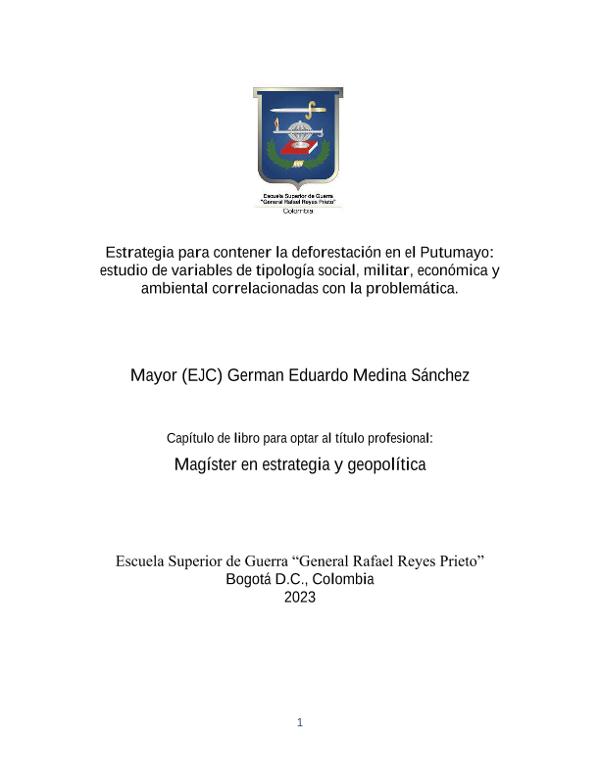Estrategia para contener la deforestación en el Putumayo: estudio de variables de tipología social, militar, económica y ambiental correlacionadas con la problemática.
Abstract
El primer trimestre de 2023 reveló que cinco municipios en Putumayo (Orito, Puerto Asís, Puerto
Caicedo, Puerto Guzmán y Valle del Guaméz) enfrentaron una deforestación acumulativa que superó el 2.33% a nivel nacional, continuando una tendencia preocupante desde 2016. El promedio anual de deforestación en Putumayo desde 2016 ha sido de al menos 12,500 hectáreas, demostrando un aumento constante. La investigación propuso una estrategia securitiza para abordar este problema, reconociendo sus raíces socioeconómicas y su impacto en el derecho a un ambiente sano. La relación entre pobreza y deforestación se comprobó estadísticamente, especialmente en municipios como Puerto Leguizamo, Puerto Guzmán, Puerto Asís y Villa Garzón. Las causas incluyen cultivos ilegales de coca y explotación ilícita de yacimientos mineros.
La investigación concluyó que se deben implementar cinco líneas de intervención para combatir la
deforestación en Putumayo: acción unificada, micro focalización de puntos de deforestación, estrategia de prevención y anticipación, brigada de protección del medio ambiente y monitoreo satelital. El aumento
constante de la deforestación presenta un desafío significativo en esta región The first quarter of 2023 revealed that five municipalities in Putumayo (Orito, Puerto
Asís, Puerto Caicedo, Puerto Guzmán, and Valle del Guaméz) faced cumulative deforestation
exceeding 2.33% nationally, continuing a concerning trend since 2016. The annual average
deforestation in Putumayo since 2016 has been at least 12,500 hectares, demonstrating a consistent
increase. The research proposed a securitist strategy to address this issue, acknowledging its socioeconomic roots and its impact on the right to a healthy environment. The statistical relationship
between poverty and deforestation was confirmed, especially in municipalities like Puerto
Leguizamo, Puerto Guzmán, Puerto Asís, and Villa Garzón. Causes include illegal coca cultivation
and illicit mining exploitation. The research concluded that five intervention lines must be
implemented to combat deforestation in Putumayo: unified action, micro-focusing on deforestation
points, prevention and anticipation strategy, environmental protection brigade, and satellite
monitoring. The persistent rise in deforestation presents a significant challenge in this region.


